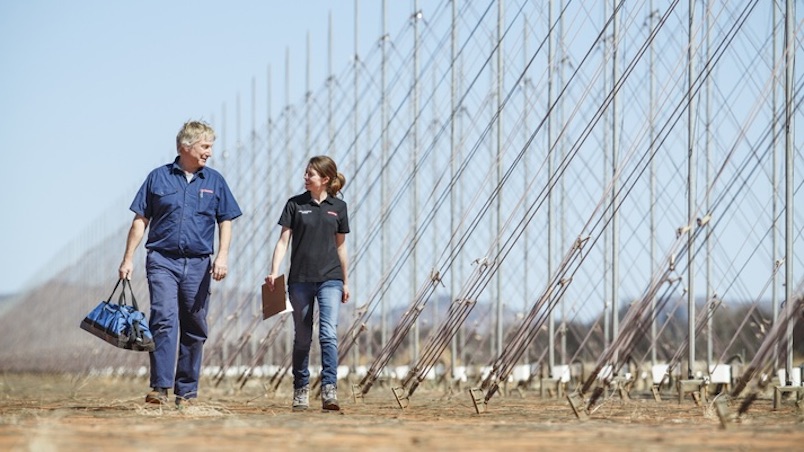Investing in science, technology, engineering and maths (STEM), and working with educational institutions, is fundamental to developing Australian technology used in projects like the Jindalee Operational Radar Network (JORN).
To continue reading the rest of this article, please log in.
Create free account to get unlimited news articles and more!
Speaking with Defence Connect, BAE Systems Australia JORN Campaign Lead Steve Wynd said central to the ongoing capability build and sustainment of JORN is a focus on enhancing and protecting Australia’s sovereign capabilities.
He said the development of talented engineers and sustainable technical proficiency is critical to achieving this outcome – and is a key component of the proposed BAE System Australia's solution to develop JORN over the upcoming upgrade period.
JORN is a world-class Over the Horizon Radar (OTHR) that delivers visibility over Australia’s northern approaches from three remote locations including Laverton (Western Australia), Alice Springs (Northern Territory) and Longreach (Queensland), supported by a control centre at RAAF Base Edinburgh in South Australia.
The state-of-the-art system provides wide area surveillance at ranges of 1,000 to 3,000 km and plays a vital role in supporting the Australian Defence Force’s air and maritime operations, border protection, disaster relief and search and rescue operations.
It is set for an upgrade with prime defence contractors BAE Systems Australia and Lockheed Martin competing to secure the estimated $1 billion contract to support the development and sustainment of the network.
The upgrade project, called Project Air 2025 Phase 6, is designed to extend the operational life of JORN to beyond 2042, with the upgrade to commence in 2018.
The BAE Systems Australia solution is supported by Raytheon Australia, a leading combat systems integrator, and Daronmont Technologies, an SME with capabilities in HF Sensor and high technology.
It also draws on the capabilities of RCR Infrastructure, which has extensive experience providing facilities management in remote sites – areas where the JORN network is located.
It is expected the government will announce the successful tenderer in the next few months.
In developing a solution for JORN, and long term capability building should the business be successful in its tender bid, Wynd emphasised that “sustaining the capabilities of the industry and its employees is absolutely vital”.
"The idea is to start back in STEM ... to work within the universities to give them the opportunity to [help us attract] the best and brightest; it's Australian technology and we need to protect it.”
"If you look at the history of HF radar and the DSTO (Defence Science and Technology Organisation), there's not as many people working in this field as there was through the late 80s and 90s – and there's competition in terms of cyber at the moment [in attracting that talent].
"We have to set ourselves up to sustain the capability; we’re going to take on about 60 graduates though our Joint Open Innovation Network (JOIN) initiative, many of whom will feed directly into the JORN Phase 6 program if we are successful. We're offering about five internships a year every year into JORN. They will be engineering students,” he said.
Wynd believes that investment in building talent at an even earlier stage is also essential, including a number of three-year scholarships that will awarded to students at the end of their first year of study.
"This will give us a steady inflow of new talent. We're connected with the universities to look at common areas of research and development, so we can partner with the DST (Defence Science Technology) Group as well as the universities and spread that research load.
"We've [also] identified PhD scholarships that we will award to students. We want to attract bright talent, get them working for three or four years, and then put them back into that academic environment to do the PhD to keep that knowledge and that enhancement occurring.”

 Login
Login







